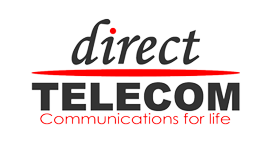Asymmetric digital subscriber line (ADSL) is a type of digital subscriber line (DSL) technology, a data communications technology that enables faster data transmission over copper telephone lines than a conventional voiceband modem can provide. It does this by utilizing frequencies that are not used by a voice telephone call. A Micro filter, allows a single telephone connection to be used for both ADSL service and voice calls at the same time. ADSL can generally only be distributed over short distances from the telephone exchange (the last mile), typically less than 4 kilometres (2 mi), but has been known to exceed 8 kilometres (5 mi) if the originally laid wire gauge allows for further distribution.
At the telephone exchange the line generally terminates at a digital subscriber line access multiplexer (DSLAM) where another frequency splitter separates the voice band signal for the conventional phone network. Data carried by the ADSL is routed over Direct Telecom’s data network and eventually reaches a conventional Internet Protocol network.
In Spain, the attainable speed of the ADSL connection can vary very much from one street to another and largely depends on the distance from the exchange, the quality of the copper wire and the contention ratio’s of the DSLAM that the customer is connected to.


